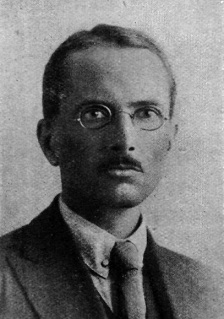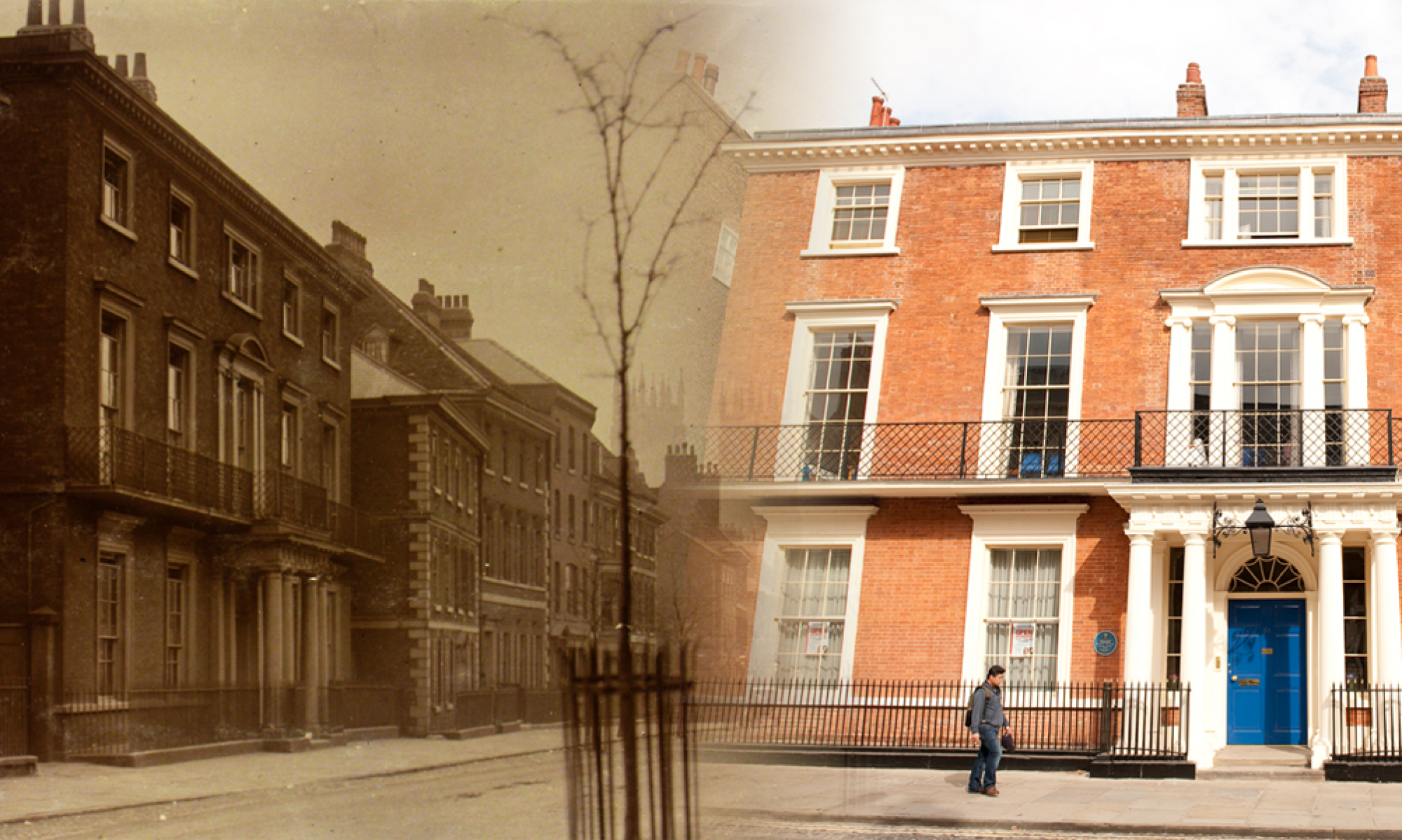
Philip John Meyer, of York, died of pneumonia while serving in Paris on 16th October, 1918, aged 31 years.
He was born at Bramley near Leeds in 1887 and attended Bootham School from 1902 to 1906. He did well at school. He was a Reeve and was an asset to the school Band.
Philip was active in the Natural History Club at school, and in the school Christmas Exhibition of 1903 he won prizes, along with his brother Sebastian Burtt, for Entomology and Coleoptera. The Natural History Report for that year includes the following (from the school magazine “Bootham” of March 1904):
“ENTOMOLOGY . Perhaps the chief work in this branch has been done by the brothers Meyer, who show upwards of 80 specimens of Lepidoptera collected during the year, including Large Tortoiseshells from the New Forest, and a number of butterflies from Normandy ; they also show a few Coleoptera, including a Longicorn Beetle from the New Forest.”
The May 1904 issue of “Bootham” tells us, in the Athletics Report, that Philip won the Gym event.
The Natural History Club Report of 1904, printed in “Bootham” of February 1905, shows that in the Christmas Exhibition, Philip won second prize for his Natural History Diary. The Entomology Report tells us:
“P. J. and S. B. Meyer secured amongst other butterflies and moths, White Admiral, Female Silver Washed Fritillary, Dark Green Fritillary, Painted Lady, Drinker and Hummingbird Hawk, in the New Forest. They also found Eyed Hawk, Goat, and Vapourer Moth caterpillars in Hampshire.”
and
“P. J. and S. B. Meyer had considerably improved their collection of butterflies and moths, and took second prize; and their collection of beetles also received a prize.”
“Bootham” of February 1906 includes the Natural History Report for 1905. The Entomology Report contains the following:
“P. J. and S. B. Meyer have added some twenty-two new species to their butterflies, most of which were collected in Southern France and the Balearic Isles. The most noteworthy finds are four specimens of Papilio machaon, two of Vanessa c-album, Colias edusa and Saturnia pavonia. Their collection of beetles has also been increased by about twenty new species, of which may be mentioned Osmoderma emerita, Sisyphus schaefferi and Ocypus cyaneus.”
and
“The brothers P . J. and S. B. Meyer have considerably improved on last year’s entomology, and they now possess a valuable collection—neatly and carefully arranged.”
The report of the Christmas Show for 1905 includes the following:
“Three collections of crystals are on view. R. K. Wilson, who shows 22 species in various stages of their growth and also a notebook, is well ahead of W. A. Wilson with 19 species, and A. A. Pollard with 2, though the last has some beautiful specimens. On the same lines are a collection of compounds of lead, and two excellent notebooks, by P. J. Meyer.”
In 1905, Philip was a curator of Meteorology in the Natural History Club.
The report of the Autumn Term 1905 includes the following:
“On the 8th and 9th morning school was partially given up in order that Mr. Theodore Nield might talk to us about “The Effect of Alcohol on the Brain”; notes were taken, and essays afterwards sent in for a prize, which was won by P . J. Meyer.”
On the last night of Autumn term 1905, a grand concert took place at school, which was organised by Philip. There were solos on piano, violin and singing by members of staff at school, “whilst instrumental music in duets, quartettes, a septette, and in full orchestra was rendered by various members of the band.”
Philip was a member of the Football Second XI in 1905. He was also a member of the Senior Essay Club, and in the Spring term of 1906, “It was also felt to be an excellent precedent, when P. J. Meyer gave us a short lecturette, with lantern slides, on the Mediterranean.”
The September 1906 issue of “Bootham”, in the report of the School Summer Term tells us:
“Towards the end of the month, P. J. Meyer tried for a scholarship at Dalton Hall, but as he only decided to enter four days beforehand, he did not expect to be successful.”
Philip left school in 1906, and the September 1906 issue of “Bootham” contains his “Bene Decessit” entry:
“P. J. MEYER came to School in September, 1902, and when already in the Upper Senior a slight breakdown in 1905 caused his removal for two terms. Since his return he has done well, especially at mathematics, but indecision spoilt his chances of passing his exams. Undecided still as to his future, he is at present going to Dalton Hall to study science. He has interested himself in the Natural History club, making a good collection of butterflies (in the holidays), and recording the weather; he has done his duty as a Reeve; and been good in goal at times. But his services have been really great to the School band.”
The February 1907 issue on “Bootham” tells us:
“PHILIP J. MEYER (1902—6), has passed the Matriculation Examination Victoria Universities Joint Board.”
And then in the October 1908 issue we are told that Philip passed the Chemistry Examination for his Bachelor Degree from Manchester University.
We don’t hear of Philip for some years, and them in the July 1918 issue of “Bootham” we read, in “Across the Months”:
“PHILIP J. MEYER (1902-6) has for some time been Financial Secretary to the F.W.V.R. Committee in Paris. Lately he has been supervising the settling, in Southern France, of refugees from the newly-invaded areas.”
And then in the December 1918 issue, under “Deaths”:
“MEYER.—On 16th October, 1918, at Paris, of pneumonia, while serving with the F.W.V.R., Philip John Meyer, of York (1902-5), aged 31.”
Philip was with the Friends’ War Victims’ Relief Committee during the war. He died of pneumonia following influenza while working with them in Paris.
The April 1919 issue of “Bootham” has an “In Memoriam” piece for him, written by his brother:
“”PHILIP JOHN MEYER (1902-6) was born at Bramley, near Leeds, in 1887, and was at Bootham from 1902 to 1906.
Leaving school as a Reeve, with a musical and gymnastic record, he studied at Manchester University, during part of which time he was in residence at Dalton Hall. Both at school and college his health frequently interfered with his work, but he entered business in Leeds with the indomitable energy which to the last concealed his limitation of strength. His knowledge of French and German stood him in good stead in his commercial relations with foreign firms, and he was an extensive traveller, visiting at various times most of the countries in Europe. At home he was well known in the philaletic world.
In 1917 he became attached to the London office of the War Victims’ Relief Committee, and worked there for three months, after which he proceeded to Paris as Accountant to the Mission. His duties in France took him to many of the field “équipes,” where, as everywhere, his skill as a pianist was in great request. As acting Treasurer to the Mission he remained in Paris during the greater part of 1918, succumbing to pneumonia following influenza in October of that year. His grave lies in the little cemetery of St. Cloud, only a few feet from those of his cousin, Sadie Henwood, and of his school-fellow, Aubyn Pumphrey. S. B. M”
There is also mention of Philip in the publication “A Scavenger in France, Being Extracts from the Diary of an Architect, 1917-19”, by William Bell *, as follows:
“CHAPTER XII. IN PARIS AND SAVOY.
15 OCTOBER. The first member of the Unit to fall a victim to La Grippe passed away to-night in the person of our worthy accountant on the Paris staff, Philip Meyer. He was the gentlest of souls, a thorough master of his work, and a musician to the finger-tips; and his cheerful presence will form a sad blank in the lives of those of us who were privileged to call him our friend. “
Philip John Meyer is buried in the cemetery of St. Cloud, near Paris.
